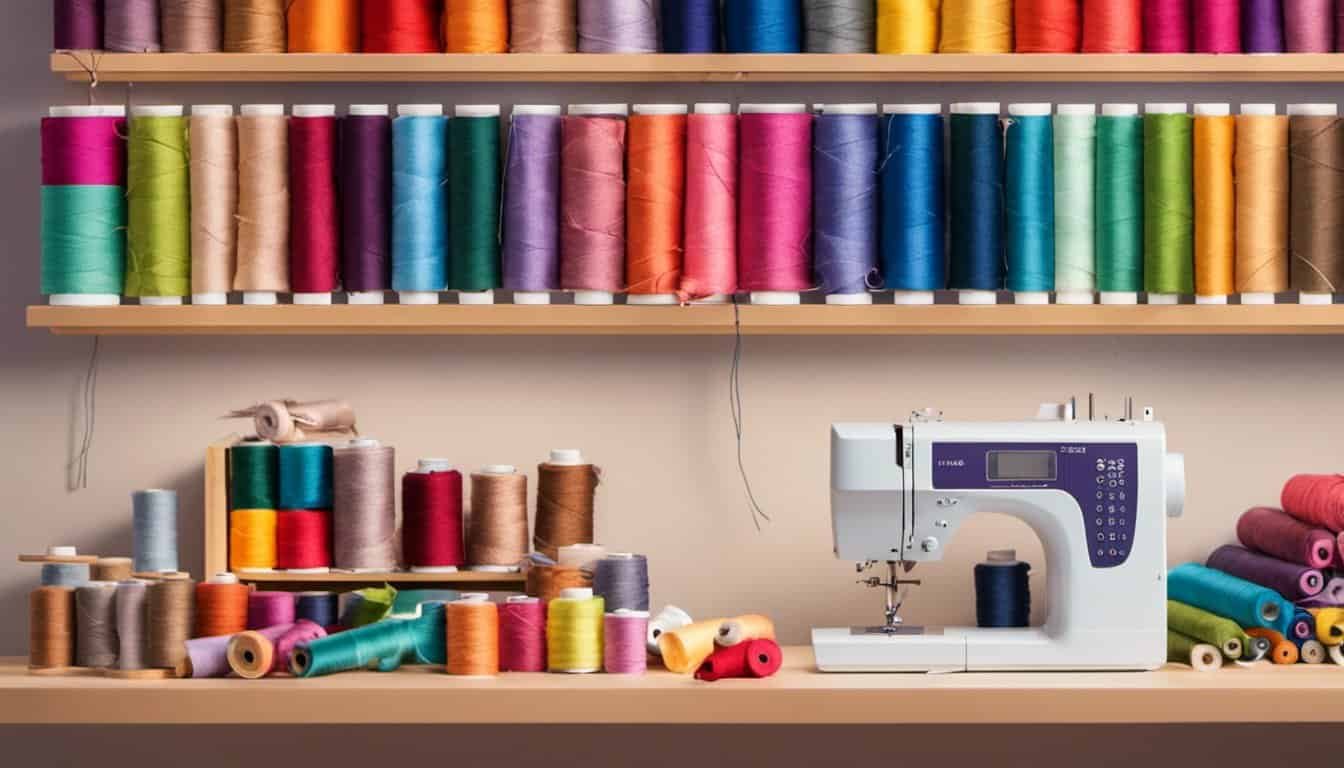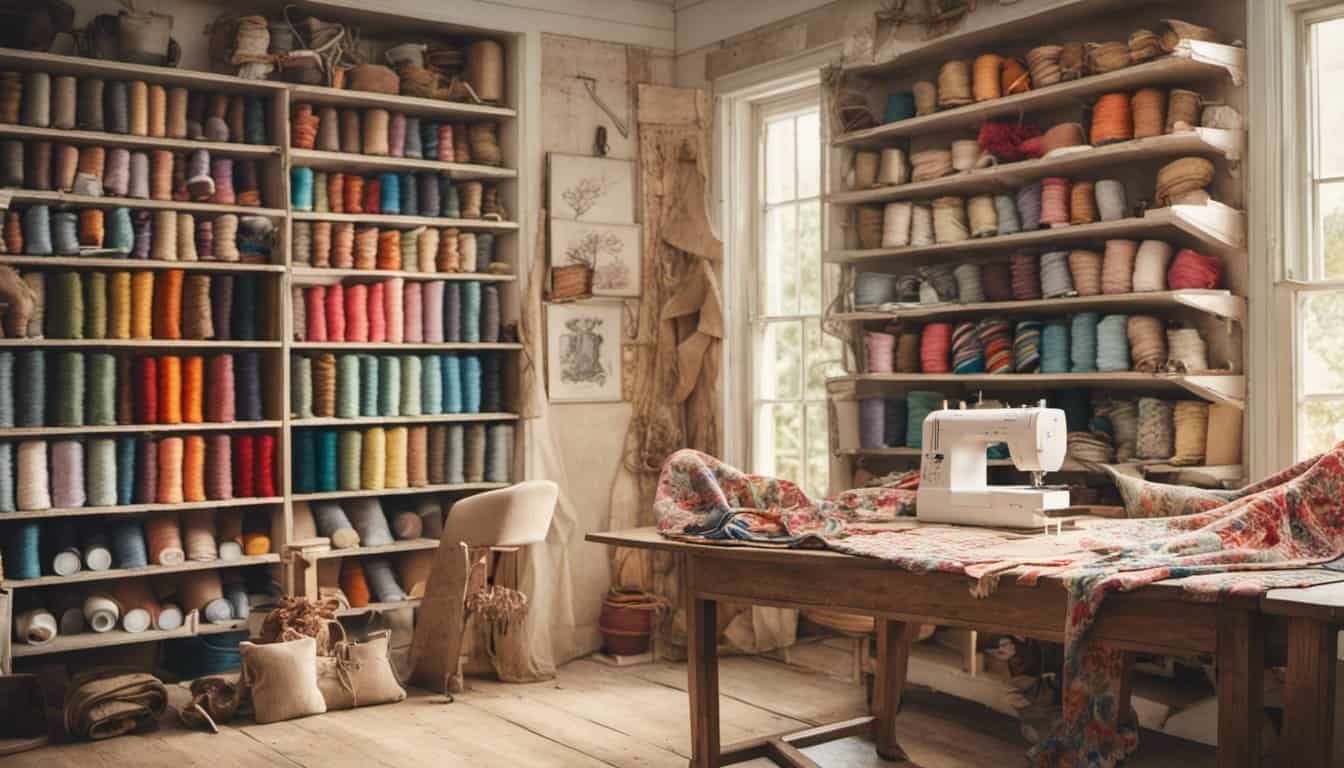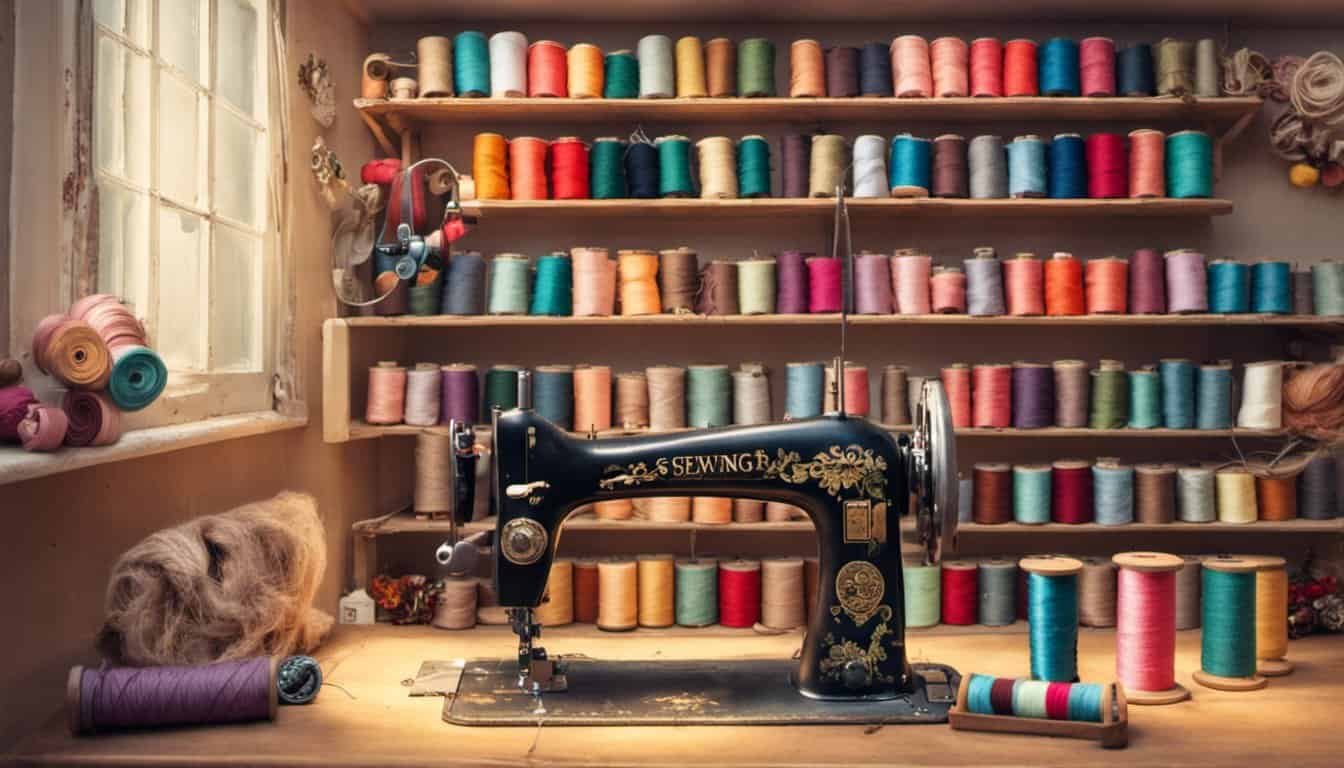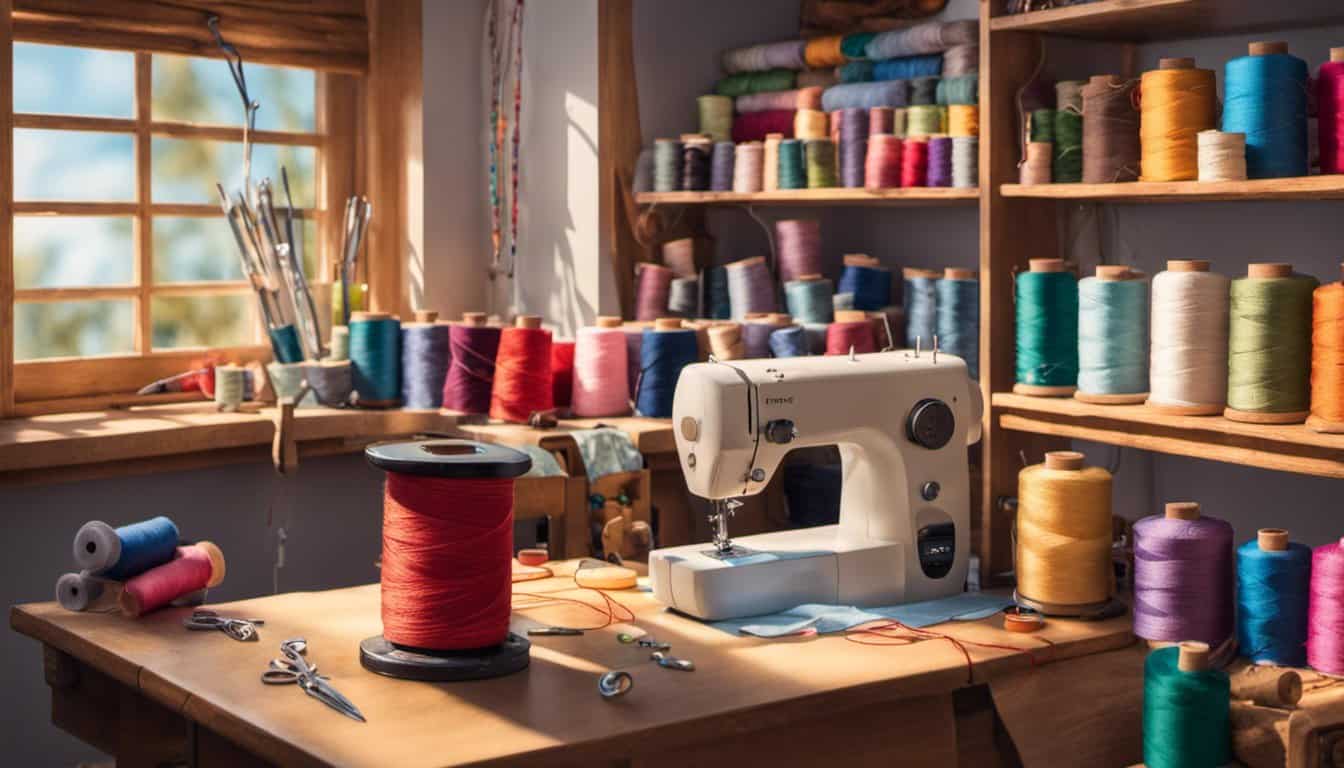Are you an adult looking to learn how to sew? Whether you’re a complete beginner or just looking to improve your skills, there are plenty of options available to you. From in-person classes at local fabric stores to online courses, there are a variety of ways to learn the basics of sewing and beyond.
One of the first steps to learning how to sew is understanding the basics. This includes learning about different types of fabrics, sewing tools, and techniques. Once you have a solid understanding of the basics, you can start to explore different types of sewing, such as quilting, embroidery, and garment-making. With so many options available, it can be overwhelming to know where to start, but taking a class can help guide you in the right direction.
When it comes to finding the right sewing class, there are a few things to consider. First, think about your skill level and what you hope to achieve from the class. Do you want to learn basic sewing skills, or are you looking to improve your existing skills? Next, consider your budget and availability. In-person classes may be more expensive and may not fit into your schedule, while online courses may be more affordable and offer more flexibility.
Key Takeaways
- Understanding the basics of sewing is crucial to getting started.
- There are a variety of options available for learning how to sew, including in-person classes and online courses.
- When choosing a sewing class, consider your skill level, budget, and availability.
Understanding Sewing Basics
As someone who is new to sewing, it can be overwhelming to try and navigate all the different tools and techniques involved. In this section, I’ll go over some of the essential sewing basics that every beginner should know.
Sewing Essentials
Before you can start sewing, you’ll need to gather a few essential tools. Here are some of the most important items you’ll need:
- Thread: This is what you’ll use to stitch your fabric together. Make sure you choose a thread that matches the color of your fabric.
- Fabric: You’ll need to choose a fabric that is appropriate for your project. There are many different types of fabric to choose from, so do some research to find the best one for your needs.
- Scissors: A good pair of fabric scissors is essential for cutting your fabric. Make sure you keep them sharp and only use them for cutting fabric.
- Seam ripper: This tool is used to remove stitches if you make a mistake. It’s a good idea to have one on hand just in case.
- Needles: You’ll need to choose the right needle for your fabric and thread. There are different types of needles for different fabrics and thread weights.
- Bobbin: This is a small spool that holds the bottom thread in your sewing machine. Make sure you wind your bobbin correctly before starting your project.
Sewing Machine Basics
Once you have your tools, it’s time to learn how to use your sewing machine. Here are some of the basic features you’ll need to know:
- Stitch length: This determines how long your stitches will be. For most projects, a stitch length of 2.5-3mm is a good place to start.
- Stitch width: This determines how wide your stitches will be. For straight stitching, you’ll usually keep the stitch width at 0.
- Tension: This controls how tight or loose your stitches are. You’ll need to adjust the tension based on your fabric and thread.
- Presser foot: This is the part of the sewing machine that holds your fabric in place while you sew. Make sure you lower the presser foot before you start sewing.
- Feed dogs: These are the teeth under the presser foot that move your fabric through the machine. Make sure they are in the up position when you want to move your fabric by hand, and in the down position when you want the machine to feed the fabric automatically.
By understanding these sewing basics, you’ll be well on your way to creating your own beautiful projects. Don’t be afraid to experiment and try new things – sewing is a skill that takes practice, but it’s also a lot of fun!
Exploring Different Types of Sewing
When it comes to sewing, there are many different types to explore. Whether you’re interested in quilting and embroidery, fashion and tailoring, or upholstery and home decor, there’s something for everyone. In this section, I’ll explore each of these types of sewing in more detail.
Quilting and Embroidery
Quilting and embroidery are two popular types of sewing that are often done together. Quilting involves piecing together fabric to create a larger piece, which is then layered with batting and a backing fabric and quilted together. Embroidery involves decorating fabric with stitches, often using colorful thread to create intricate designs.
If you’re interested in learning more about quilting and embroidery, there are many classes available for adults. For example, Anita by Design offers a beginner’s embroidery class, while Skillshare has a class on pattern drafting for embroidery.
Fashion and Tailoring
Fashion and tailoring are all about creating garments that fit well and look great. This type of sewing involves working with patterns, measuring and fitting, and using different types of fabrics and materials to create clothing that is both stylish and functional.
If you’re interested in learning more about fashion and tailoring, there are many classes available for adults. For example, The New York Sewing Center offers a variety of classes, from beginner’s sewing to advanced tailoring. Kim’s Upholstery also offers a tailoring class for adults.
Upholstery and Home Decor
Upholstery and home decor sewing involves creating items for the home, such as curtains, pillows, and upholstery. This type of sewing requires working with heavier fabrics and materials, and often involves using a sewing machine to create more complex items.
If you’re interested in learning more about upholstery and home decor sewing, there are many classes available for adults. For example, JoLene’s Sewing School offers an upholstery class for adults, while Sewing Classes Online has a variety of classes for home decor sewing.
In conclusion, there are many different types of sewing to explore, from quilting and embroidery to fashion and tailoring to upholstery and home decor. Whether you’re a beginner or an experienced sewer, there are classes available to help you learn and improve your skills.
Finding the Right Sewing Classes
As an adult looking to learn how to sew, finding the right sewing class can be a daunting task. With so many options available, it can be difficult to know where to start. In this section, I will discuss some of the best places to find sewing classes for adults, both online and in-person.
Physical Classes
If you prefer a more hands-on approach to learning, attending a physical sewing class may be the best option for you. Many cities have local sewing centers or community centers that offer sewing classes for adults. One such example is the New York Sewing Center, which offers a variety of classes for all skill levels.
Another option is to check with your local fabric or craft store. Many of these stores offer sewing classes for adults, and they often have a variety of classes to choose from, ranging from beginner to advanced levels.

Online Classes
If attending a physical class is not feasible for you, online classes may be a great alternative. There are many online platforms that offer sewing classes, including Craftsy.com, Skillshare, and Learning Platform.
One of the advantages of online classes is that they offer flexibility in terms of scheduling. You can take classes at your own pace and on your own schedule. Many online classes also offer the option of interacting with the instructor and other students through video conferencing platforms such as Zoom or FaceTime.
In addition to online classes, there are also many online tutorials available for free on websites such as YouTube. While these tutorials may not be as comprehensive as a full online class, they can still be a great way to learn new sewing techniques or refresh your skills.
Overall, whether you choose to attend a physical sewing class or an online class, there are many options available for adults looking to learn how to sew. By doing some research and finding the class that best fits your needs and schedule, you can be on your way to creating beautiful handmade items in no time.
Using Online Resources for Learning
« Why Your Sewing Machine Might Be Jamming: Common Causes and Solutions
Alternative Hobbies to Sewing: Fun and Creative Ways to Spend Your Free Time »
As an adult learner, online resources can be a great way to learn sewing skills. Here are two types of online resources that I have found to be helpful:
YouTube Sewing Tutorials
YouTube is an excellent resource for learning sewing skills. There are many channels that offer free tutorials on sewing. One of my favorite channels is Anita by Design. Anita has a friendly and engaging teaching style that makes learning to sew fun. Her tutorials cover a wide range of topics, from basic sewing skills to more advanced techniques such as pattern drafting and fitting.
Other popular YouTube channels for sewing tutorials include Sewing Parts Online, Professor Pincushion, and Made to Sew. These channels offer a variety of tutorials on different aspects of sewing, including garment construction, alterations, and embroidery.
Subscription-Based Learning Platforms
Another option for online learning is subscription-based learning platforms. These platforms offer a range of courses on different topics, including sewing. Some popular platforms for sewing courses include Craftsy, Skillshare, and Creativebug.
Craftsy offers a wide range of sewing courses, from beginner to advanced. Their courses cover topics such as sewing basics, pattern drafting, and fitting. Skillshare also offers a variety of sewing courses, including courses on sewing techniques and garment construction. Creativebug offers courses on sewing as well as other crafts such as knitting, crochet, and embroidery.
Subscription-based learning platforms usually require a monthly or yearly subscription fee. However, they often offer a free trial period, so you can try out the courses before committing to a subscription.

In conclusion, online resources can be a great way to learn sewing skills as an adult learner. YouTube sewing tutorials and subscription-based learning platforms are two options to consider. With the variety of resources available, there is sure to be an option that fits your learning style and budget.
Improving Your Sewing Skills
As someone who loves to sew, I am always looking for ways to improve my skills. Whether you are a beginner or an experienced sewer, there are always new techniques to learn and new designs to create. In this section, I will share some tips and tricks that have helped me improve my sewing skills.
Practicing with Free Patterns
One of the best ways to improve your sewing skills is to practice with free patterns. There are many websites that offer free patterns for a variety of projects, from clothing to home decor. By practicing with these patterns, you can improve your sewing skills without spending a lot of money.
Some of my favorite websites for free sewing patterns include All Free Sewing, SewCanShe, and So Sew Easy. These websites offer a wide variety of patterns for all skill levels, so you are sure to find something that interests you.
Hand Sewing Techniques
While sewing machines are great for many projects, there are times when hand sewing is the best option. Hand sewing can be used for delicate fabrics, repairs, and finishing touches. Learning hand sewing techniques can also help you improve your machine sewing skills.

Some of the most important hand sewing techniques to learn include basting, backstitching, and whipstitching. These techniques can be used for a variety of projects, from clothing to quilting. There are many resources available for learning hand sewing techniques, including YouTube tutorials and books.
Creating Your Own Designs
One of the most rewarding aspects of sewing is creating your own designs. Whether you want to design your own clothing, home decor, or accessories, pattern making is an important skill to learn. By creating your own patterns, you can ensure that your projects fit perfectly and reflect your personal style.
There are many resources available for learning pattern making, including online courses, books, and software. With practice and patience, you can become a skilled pattern maker and create designs that are truly unique.
Improving your sewing skills takes time and practice, but it is a rewarding journey. By practicing with free patterns, learning hand sewing techniques, and creating your own designs, you can take your sewing skills to the next level.
Choosing Sewing Accessories
When it comes to sewing, having the right accessories can make all the difference. From thread and fabric to scissors and needles, each accessory plays a crucial role in the sewing process. As someone who has been sewing for a while, I have learned that choosing the right sewing accessories is just as important as choosing the right sewing machine.

Thread
Thread is one of the most important sewing accessories. It is what holds your fabric together and keeps your seams from unraveling. When choosing thread, make sure to select the right type and weight for your project. Cotton thread is great for natural fibers, while polyester thread is perfect for synthetic fabrics. You can also choose from a variety of weights, from lightweight to heavy-duty.
Fabric
The fabric you choose can make or break your project. When selecting fabric, consider the weight, texture, and color. Lightweight fabrics like cotton and linen are great for summer projects, while heavier fabrics like wool and denim are perfect for winter projects. Make sure to also choose a color that complements your project and your personal style.
Scissors
A good pair of scissors is essential for any sewing project. Look for scissors that are sharp and comfortable to hold. You can choose from a variety of sizes, from small embroidery scissors to large dressmaking scissors. Make sure to also invest in a pair of pinking shears, which will help prevent your fabric from fraying.
Seam Ripper
No matter how experienced you are, mistakes happen. That’s where a seam ripper comes in handy. This small tool is used to remove stitches and correct mistakes. Look for a seam ripper that is sharp and easy to hold.
Needles
Having the right needle for your project is crucial. Needles come in a variety of sizes and types, from universal to denim to leather. Make sure to select the right needle for your fabric and project. You should also replace your needle frequently to ensure smooth stitching.

Bobbins
Bobbins are small spools that hold your thread in place. Make sure to choose bobbins that are compatible with your sewing machine. You should also have multiple bobbins on hand, so you can switch out colors easily.
Sewing Essentials
In addition to the accessories mentioned above, there are a few other sewing essentials that you should have on hand. These include:
- Pins: used to hold fabric in place
- Pin cushion: used to store pins
- Measuring tape: used to measure fabric and patterns
- Iron: used to press seams and fabric
By choosing the right sewing accessories, you can make your sewing projects easier and more enjoyable. Remember to consider the type and weight of thread, the weight and color of fabric, the sharpness and comfort of scissors, the sharpness and ease of use of seam rippers, the size and type of needles, the compatibility of bobbins with your sewing machine, and the importance of sewing essentials like pins, pin cushions, measuring tape, and iron.
Understanding Pricing for Sewing Classes
As someone who has taken sewing classes before, I know that pricing can vary greatly depending on the type of class you’re taking. Here are some things to keep in mind when trying to understand pricing for sewing classes:
In-Person Classes
If you’re looking for in-person sewing classes, you can expect to pay anywhere from $25 to $55 per hour. The price will depend on the location, the experience of the instructor, and the length of the class. Some classes may require you to bring your own sewing machine, while others may provide one for you to use.

Online Classes
Online sewing classes can be a great option if you’re looking for something more affordable or if you don’t have access to in-person classes in your area. You can find online classes for as little as $10 per month with a subscription to a platform like Craftsy or Skillshare. These platforms offer a wide variety of classes, from beginner to advanced, and you can learn at your own pace.
Private Lessons
If you’re looking for more personalized attention, you can consider taking private sewing lessons. Private lessons can be more expensive, with prices ranging from $40 to $60 per hour. However, you’ll have the advantage of one-on-one instruction and the ability to tailor the lesson to your specific needs and interests.
Other Factors to Consider
When it comes to pricing for sewing classes, there are a few other factors to keep in mind. For example, some classes may require you to purchase your own materials, like fabric and thread. Others may offer a discount if you sign up for multiple classes at once. It’s also worth considering any financial assistance programs that may be available to make classes more affordable.
Overall, the cost of sewing classes can vary widely depending on the type of class you’re taking and other factors. However, with a little research and planning, you can find a class that fits your budget and helps you develop your sewing skills.
Frequently Asked Questions
What are some beginner-friendly sewing classes for adults?
If you’re new to sewing, you might want to start with a beginner-friendly class. Some great options include Sewing 101 classes or basic sewing classes for adults. The Newton Sewing Studio offers a Sewing 101 course that covers the basics of sewing, including how to use a sewing machine and basic stitching techniques.

Where can I find in-person sewing classes for adults?
If you prefer in-person classes, you can check your local community college or technical school. Many of them offer sewing classes for adults, and some even have certificate or degree programs related to fashion. You can also check with local sewing schools or shops, as they may offer classes as well. JoLene’s Sewing School offers adult sewing classes at various levels, from beginner to advanced.
Are there any free sewing classes for adults in my area?
While it’s not common to find free sewing classes for adults, you can check with your local library or community center to see if they offer any. You can also search online for free sewing tutorials and videos, which can be a great way to learn at your own pace.
What is the best way for an adult to learn to sew?
The best way to learn to sew as an adult is to take a class or workshop. In-person classes can be great for hands-on learning and immediate feedback, while online classes can be more flexible and convenient. It’s also helpful to practice regularly and start with simple projects before moving on to more complex ones.
Where should I start if I want to learn how to sew?
If you’re just starting out, it’s a good idea to begin with the basics. Learn how to use a sewing machine, how to thread a needle, and basic stitching techniques. You can start with simple projects, such as a pillowcase or tote bag, before moving on to more complex projects.
How long does it typically take to complete a sewing course for adults?
The length of time it takes to complete a sewing course for adults can vary depending on the course and your level of experience. Some courses may be a few weeks long, while others may be several months. It’s important to choose a course that fits your schedule and goals.


















